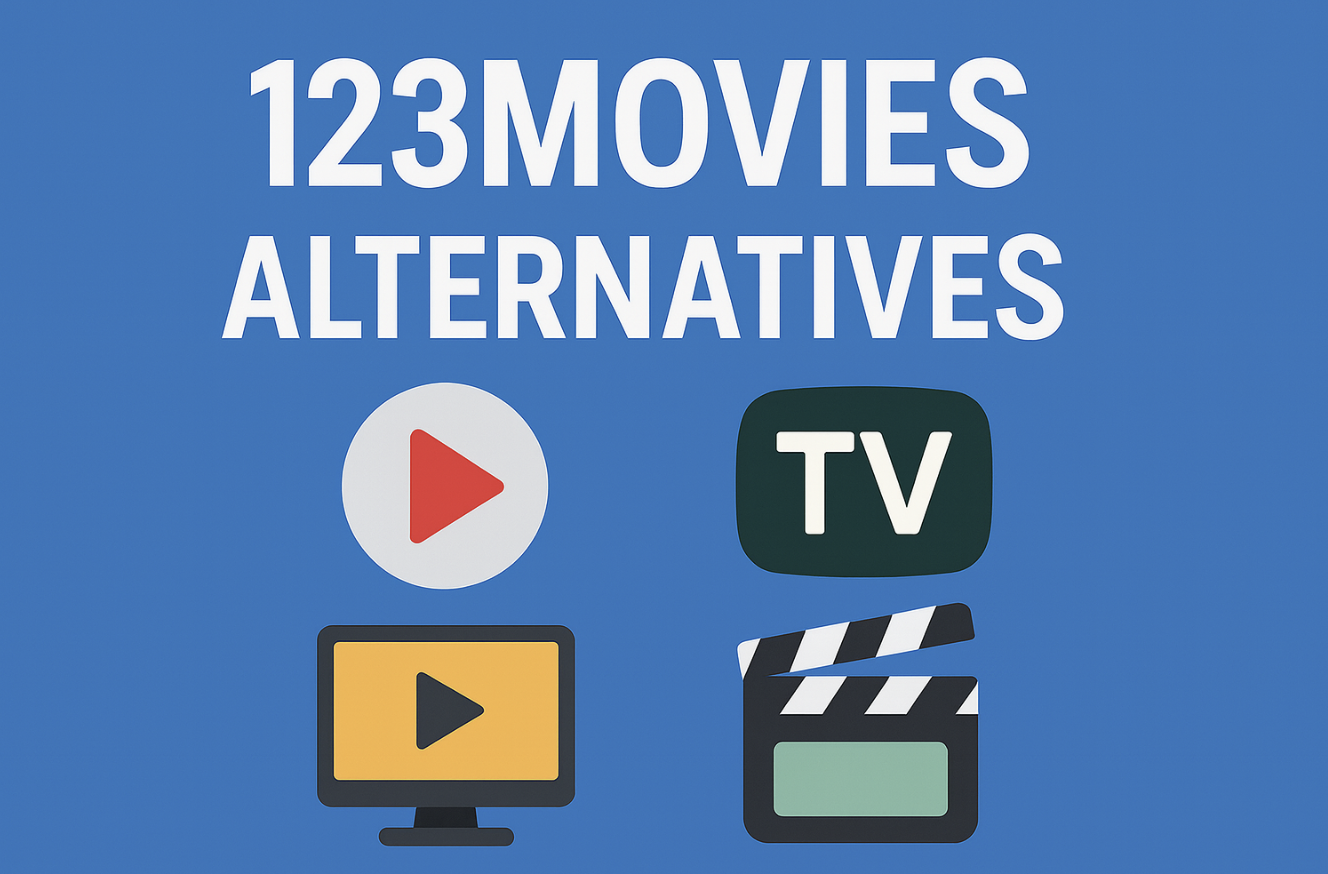Guide
Looking for Klaviyo Alternatives? Try Maestra for Smarter E-Commerce Automation

In the competitive world of e-commerce, personalization and automation are key to driving sales and customer engagement. Klaviyo has long been a popular choice for email and SMS marketing automation, but it’s not the only player in the game. Many growing businesses are now seeking Klaviyo alternatives that offer better pricing, more flexible integrations, and smarter automation tools.
Enter Maestra — an innovative marketing automation platform that helps e-commerce brands streamline their workflows, improve communication, and increase conversion rates through intelligent automation. If you’ve been exploring alternatives to Klaviyo, Maestra might just be the perfect fit for your business.
Why Businesses Are Looking Beyond Klaviyo
Klaviyo is a well-known tool in the e-commerce space, but many users have started looking for more affordable and user-friendly solutions. Here are a few common reasons why businesses are considering Klaviyo alternatives:
-
Pricing Concerns – Klaviyo’s pricing structure can be costly for growing stores, especially as contact lists and email volumes expand. Many small and medium-sized businesses find themselves paying more than expected as their subscriber base grows.
-
Complex Setup – While Klaviyo offers robust features, setting up campaigns, flows, and segmentation can be complicated for non-technical users.
-
Limited Customer Support for Lower Tiers – Businesses on lower pricing tiers often report slower response times and limited access to advanced support options.
-
Overwhelming Interface – The platform’s powerful but dense interface can overwhelm new users who simply want to automate and grow without a steep learning curve.
That’s where Maestra comes in — offering smarter automation, AI-powered tools, and a simplified experience tailored for modern e-commerce businesses.
Introducing Maestra: A Smarter Klaviyo Alternative
Maestra is a next-generation marketing automation platform built specifically for e-commerce. Designed to simplify automation without sacrificing performance, Maestra gives businesses all the tools they need to build meaningful customer relationships and boost sales — without the high costs or complexity of traditional platforms.
Key Features of Maestra
-
AI-Powered Customer Segmentation
Maestra uses machine learning to analyze customer behavior, purchase history, and engagement data. This allows brands to create highly targeted segments automatically — making personalization effortless. -
Multi-Channel Campaign Automation
Whether through email, SMS, or push notifications, Maestra unifies all your communication channels in one dashboard. You can create consistent and personalized campaigns across multiple platforms without juggling separate tools. -
Drag-and-Drop Automation Builder
Unlike Klaviyo’s somewhat technical flow builder, Maestra’s intuitive drag-and-drop editor helps even beginners design sophisticated automation workflows in minutes. -
Smart Analytics and Reporting
Maestra’s real-time analytics dashboard gives you deeper insights into campaign performance, customer engagement, and ROI — helping you make smarter marketing decisions. -
Dynamic Product Recommendations
By analyzing customer data and purchase patterns, Maestra can automatically suggest products that customers are most likely to buy — increasing average order value and retention.
Maestra vs. Klaviyo: What Makes Maestra Stand Out
When comparing Maestra to Klaviyo, it’s clear that Maestra focuses on simplicity, intelligence, and affordability. Let’s break down the major differences:
| Feature | Klaviyo | Maestra |
|---|---|---|
| Ease of Use | Steeper learning curve | Beginner-friendly interface |
| Pricing | Expensive for growing lists | Flexible and affordable |
| AI-Powered Segmentation | Limited | Advanced and automated |
| Omnichannel Automation | Email + SMS | Email, SMS, push notifications, and more |
| Customer Support | Tier-based | Priority support for all users |
Maestra’s goal is to democratize marketing automation — giving even small online businesses access to tools that previously only large enterprises could afford.
How Maestra Boosts E-Commerce Growth
Let’s take a closer look at how Maestra helps online stores grow smarter and faster:
1. Personalization That Converts
According to HubSpot, personalized emails deliver six times higher transaction rates. Maestra takes this further by automatically tailoring each customer’s journey using data-driven insights.
2. Smarter Workflows and Triggers
From abandoned cart reminders to post-purchase follow-ups, Maestra automates every stage of the customer lifecycle. You can build workflows that respond instantly to customer actions — without writing a single line of code.
3. Improved Retention and Loyalty
Through consistent engagement and personalized offers, Maestra helps brands maintain relationships long after the first sale. The platform’s loyalty automation tools encourage repeat purchases and brand advocacy.
4. Enhanced Data Integration
Maestra integrates easily with popular platforms like Shopify, WooCommerce, and BigCommerce — syncing your data seamlessly for accurate, real-time automation. Learn more about e-commerce integrations at Shopify’s App Store.
Pricing That Grows With You
Unlike Klaviyo, which can become cost-prohibitive as your list expands, Maestra offers scalable pricing designed for businesses of all sizes. Whether you’re a startup or an established e-commerce brand, you can find a plan that fits your needs and budget.
Every Maestra plan includes:
-
Unlimited automation flows
-
Access to all channels (email, SMS, push)
-
AI-powered segmentation
-
Real-time analytics
-
24/7 customer support
This ensures that you’re not paying extra for features that should be standard — a key reason why many users are switching from Klaviyo to Maestra.
Real-World Example: How Maestra Transforms E-Commerce Automation
Consider an online skincare brand struggling with high cart abandonment rates and low repeat purchases. After switching from Klaviyo to Maestra, the brand implemented personalized cart recovery campaigns, AI-driven product recommendations, and automated loyalty programs.
Within three months, they reported:
-
A 30% increase in recovered sales
-
A 20% boost in repeat customers
-
Higher email engagement thanks to dynamic content personalization
This success story illustrates how Maestra’s intelligent automation helps businesses achieve more with less effort.
The Future of E-Commerce Marketing: Smarter, Not Harder
The e-commerce landscape is evolving rapidly, and success now depends on how effectively brands can use data and automation to personalize customer experiences. Platforms like Maestra represent the future — blending the power of AI with user-friendly design to help businesses scale faster.
As customer expectations rise, relying on outdated or overly complex tools can hold your brand back. By switching to Maestra, you’re choosing a modern, agile, and smarter automation platform built to help you thrive in today’s digital marketplace.
Final Thoughts: Should You Switch from Klaviyo to Maestra?
If you’re tired of paying high fees or struggling with complicated automation setups, Maestra offers a powerful and affordable alternative. It’s built for e-commerce stores that value simplicity, efficiency, and smart growth.
With its AI-driven tools, omnichannel automation, and easy-to-use dashboard, Maestra helps you deliver personalized experiences that convert — all without the steep learning curve or costs of traditional platforms.
So, the next time you’re looking for a Klaviyo alternative, don’t settle for less. Try Maestra and experience what smarter e-commerce automation truly feels like.
Guide
Is Seekde the Right Solution for Your Business? An In-Depth ROI Analysis

If you have been paying attention to the latest shifts in business technology, you have likely heard the buzz surrounding seekde in the corporate world. It promises to be more than just a search tool; it claims to be a complete ecosystem for knowledge discovery and workflow automation. But for a prudent business leader, the real question is not about hype—it is about the Return on Investment (ROI).
In this report, we act as your dedicated investigative team. We will strip away the marketing fluff to determine if seekde is a smart financial move or just another subscription to cancel next year. By analyzing time savings, software consolidation, and productivity metrics, we will help you decide if this platform earns its place in your tech stack.
What is Seekde Actually?
Before calculating value, we must define the asset. Think of seekde not as a standard search engine, but as a digital “knowledge loom.” Traditional search engines give you threads of information (links), leaving you to weave them into a fabric (answers).
Seekde does the weaving for you. It uses advanced Artificial Intelligence to:
- Contextualize Data: It understands *why* you are searching, not just *what* you typed.
- Integrate Workflows: It connects with your existing tools like Slack or Trello to find internal answers.
- Predict Needs: It suggests relevant data before you even realize you need it.
For a business, this means the end of “tab fatigue.” Instead of opening twenty tabs to research a market trend, your team gets a synthesized, verifiable answer in seconds.
The Hard Numbers: Calculating the ROI of Seekde
When we talk about ROI, we often look for hard currency. With seekde, the financial return comes primarily from two sources: Time Reclamation and Stack Consolidation.
Turning Time Into Money
Let’s use a hypothetical scenario. Imagine a mid-sized marketing team of 10 people. The average employee spends roughly 20% of their week just searching for information—tracking down files, researching competitors, or finding old emails.
If seekde reduces that search time by half, you effectively gain back 10% of your work week. For a team with an average salary of $60,000, that is $60,000 in recovered productivity per year.
This is not “soft” money; these are billable hours or creative brainstorming sessions that were previously lost to the void of inefficient searching.
The “Subscription Diet” Effect
Modern businesses are bloated with software. You might have one tool for project management, another for internal wikis, and a third for market research. Seekde often functions as a central hub that can replace or streamline these fragmented tools.
- Eliminate Redundancy: If you can drop a premium internal search tool or a standalone market intelligence subscription, the cash savings are immediate.
- Lower Training Costs: diverse tools require diverse training. A single, intuitive interface reduces the onboarding burden on HR.
Analyzing the Features: Does Seekde Deliver?
To understand if the price tag is justified, we must audit the features. A tool is only as valuable as its utility in the trenches of daily work.
Smart Search vs. Traditional Search
Most employees are used to keyword matching. If they type “Q3 Report,” they get every file with “Q3” in the name. Seekde operates on *intent*.
If a manager asks, “How did we perform in Q3 compared to Q2?”, the platform pulls data from the Q3 report and the Q2 report and presents a comparison. It acts like a junior analyst rather than a file cabinet.
Data Exploration (“De”)
The “de” in seekde stands for Data Exploration. This feature is the differentiator for power users. It allows teams to visualize complex datasets without needing a data scientist.
For example, a sales lead can upload a messy CSV file of customer leads. The platform can instantly organize it, highlight high-value targets, and spot regional trends. This feature alone can save hours of manual Excel work every week.
Soft ROI: The Hidden Benefits of Seekde
Not every benefit fits neatly into a spreadsheet. However, these “soft” returns often determine long-term company health.
Reduced Cognitive Load is a major factor. When employees struggle to find information, they get frustrated. This frustration leads to burnout. By making information retrieval effortless, you preserve your team’s mental energy for high-value problem solving.
Better Decision Velocity is another intangible asset. In business, speed is a weapon. If your competitor takes three days to assess a market shift, and your team uses seekde to do it in three hours, you win. You cannot easily put a dollar sign on speed, but you can certainly see its impact on market share.
Integration Capabilities
A standalone tool creates silos. A robust solution breaks them down.
- Seamless Connection: It links with CRMs, email clients, and cloud storage.
- Security First: It ensures that sensitive internal data remains within the company walls, unlike open AI tools like ChatGPT.
Implementation: Is Your Team Ready for Seekde?
Buying the software is the easy part. Getting your team to use it is the challenge. The “learning curve” is often where ROI goes to die.
The Adoption Hurdle
Technologically, the platform is user-friendly. However, it requires a cultural shift. Employees are used to “Googling” things or digging through folders. Training them to “ask” the platform complex questions takes time.
Recommendation: If you invest, appoint a “Champion” within your office. This person should master the advanced features and show others the shortcuts. Without this internal advocate, your expensive software might sit collecting digital dust.
Conclusion: The Final Verdict on Seekde
So, is seekde the silver bullet for your business efficiency?
If your team spends hours drowning in data, struggling to find internal documents, or paying for too many single-use tools, the answer is likely yes. The hard cost savings from productivity gains alone often justify the license fees within the first quarter.
However, if your business is small and your data is already well-organized, the advanced “Data Exploration” features might be overkill.
The Bottom Line: Treat this investment as a hire, not a purchase. Seekde is effectively a digital employee that works 24/7, never sleeps, and remembers everything. For most modern enterprises, that is an employee worth hiring.
Guide
What Really Happens Up There: A Simple Guide to Roof Care

Why Roof Care Matters More Than Most Homeowners Realize
Most people barely think about their roof until something goes wrong, yet it is one of the hardest working parts of the home. It handles sun, rain, snow, wind and temperature swings every single day. Roof care is not complicated, but it is essential for protecting your home’s value and comfort. A well maintained roof lasts longer, looks better and prevents costly issues inside the home. Many homeowners look for guidance from a Manhattan Ny Contractor who understands how different materials age, how weather affects performance and which maintenance steps give the biggest return. Taking care of your roof is not just a seasonal task. It is a year round responsibility.
Understanding the Roof as a Complete System
A roof is more than its surface. It includes layers that work together to protect your home. Shingles, underlayment, flashing, vents and gutters all play a role in how well the system performs. When one part weakens, the entire structure becomes vulnerable. This is why inspections are important. They reveal early signs of wear, such as cracked shingles or loose seals, long before water reaches the interior. A Manhattan Ny Contractor can help homeowners understand how each component contributes to a strong roof and what to watch for each year.
The Role of Cleaning in Roof Maintenance
Cleaning is one of the simplest yet most overlooked parts of roof care. Over time, leaves, branches and dirt settle on the surface, holding moisture and encouraging moss or algae growth. These elements weaken the roof and create dark streaks that make the home look older. A proper cleaning removes buildup so the materials can breathe and dry naturally. Clearing debris also reduces weight and prevents water pools from forming. Roof surfaces stay healthier longer when cleaned at least once a year. A clean roof also allows for easier detection of damage because imperfections become visible.
Why Small Repairs Should Never Be Delayed
Minor roof problems quickly grow into major repairs if ignored. A loose shingle, lifted nail or small gap in flashing might seem harmless, but water only needs a tiny opening to seep inside. Once moisture reaches wood framing or insulation, damage spreads before anyone notices. Making small repairs as soon as they appear is the best way to protect your home. This includes replacing missing shingles, sealing gaps and tightening loose elements. A Manhattan Ny Contractor can perform these repairs safely and ensure that materials match the existing roof for a seamless finish.
The Importance of Ventilation and Airflow
Proper ventilation keeps roofs healthy by balancing temperatures inside the attic. When hot air becomes trapped, shingles age faster and insulation deteriorates. Moisture also builds up, creating conditions for mold or wood rot. Good airflow prevents these issues by allowing hot, humid air to escape. Soffit and ridge vents work together to maintain a steady cycle of air movement. This helps the roof last longer and makes the home more energy efficient. Ventilation is one of the most effective but least visible aspects of roof care.
Gutter Maintenance and Its Impact on the Roof
Gutters are essential to roof care because they control how water moves away from the house. When gutters clog, water spills onto the roof edge, saturating materials and weakening the structure. Overflow can also damage siding, landscaping and the foundation. Regular gutter cleaning ensures that water flows properly and reduces the risk of leaks. Homeowners should check gutters during fall and spring, especially after heavy storms. Repairing sagging sections or replacing worn components keeps the system working its best.
Seasonal Roof Checks That Protect Your Home
Different seasons bring different challenges. Summer heat stresses shingles, fall debris collects in heavy layers, winter ice causes expansion and spring rain tests every joint. Conducting seasonal checks helps you catch problems early. In summer, look for curling shingles. In fall, clear debris promptly. In winter, watch for ice buildup along the edges. In spring, inspect flashing and seals for signs of movement. These small efforts throughout the year prevent bigger problems from forming.
How Weather Patterns Affect Roof Lifespan
Sun exposure fades materials over time, snow adds weight and moisture, and heavy winds can lift or loosen shingles. Understanding how local weather affects your roof helps you plan appropriate maintenance. Homes in areas with intense sunlight need shingles designed for UV resistance. Homes exposed to strong winds need proper fastening techniques. An experienced Manhattan Ny Contractor can recommend materials and care routines suited for the region’s climate patterns.
The Value of Professional Inspections
Even if you check your roof regularly, professional inspections are essential. Experts know where damage typically begins and can spot issues invisible from the ground. Roofing professionals use safe equipment and have training to evaluate structural integrity, ventilation and overall condition. Scheduling an inspection once or twice a year adds a layer of protection that homeowners cannot achieve alone.
Keeping Your Roof Healthy for Years to Come
Routine roof care is the difference between a roof that lasts twenty years and one that lasts thirty or more. Cleaning, repairs, ventilation and inspections all work together to extend the life of the system. A well cared for roof protects your home from the elements, reduces energy costs and maintains the home’s appearance. Simple habits make a lasting impact when practiced consistently.
Guide
Study Visa Consultant for MBBS in China – Your Complete Guide for Pakistani Students

Choosing the right destination for medical studies is one of the most important decisions for any student. Over the past decade, MBBS in China has become one of the top choices for Pakistani students due to its global recognition, affordable cost structure, and high-quality medical education. If you are planning to study MBBS abroad, working with a reliable study visa consultant for China can make the entire process smooth, transparent, and stress-free.
This article explains why China is the best option for MBBS, why Pakistani students prefer Chinese medical universities, and how the right consultant can guide you toward a successful medical career abroad.
Why Choose China for MBBS?
1. Affordable Tuition Fees
Compared to many Western countries, China offers budget-friendly MBBS programs. Even high-ranking Chinese medical universities offer tuition fees that are significantly lower than those in the US, UK, or even some Asian countries.
2. Globally Recognized Medical Degrees
Most Chinese medical universities are recognized by WHO, PMC (Pakistan Medical & Dental Council), UNESCO, and other global bodies. This recognition ensures that graduates can continue their careers in Pakistan or apply for international licensing exams.
3. English-Medium Programs
Several top universities in China provide MBBS programs fully taught in English, making it easier for Pakistani students to adapt and excel academically.
4. Advanced Medical Infrastructure
China is a global leader in modern medical technology. Students benefit from:
- State-of-the-art laboratories
- Modern hospitals with high patient inflow
- Practical clinical exposure
This exposure prepares students to meet global medical standards.
5. Safe and Culturally Friendly Environment
Chinese cities are known for being safe, clean, and welcoming for international students. The cultural environment is respectful and easy to adjust to, especially for South Asian students.
Why MBBS in China is Ideal for Pakistani Students
1. Similar Educational Systems
China’s academic structure closely resembles Pakistan’s, especially in medical disciplines. This familiarity makes the transition smooth and reduces academic pressure.
2. Affordable Living Costs
Accommodation, transportation, and daily expenses in China are comparatively lower than in many other countries offering MBBS programs. Pakistani students can live comfortably on a reasonable budget.
3. High Visa Success Rate
China maintains strong educational ties with Pakistan, resulting in a high student visa approval rate for genuine applicants.
4. Halal Food and Community Support
Halal food is easily available across major Chinese cities, and large Pakistani student communities assist newcomers in adjusting quickly.
5. Internship and Job Opportunities
Chinese hospitals offer diverse clinical experiences. After graduation, students can return to Pakistan for house jobs or attempt licensing exams such as NLE, USMLE, PLAB, etc.
Role of a Study Visa Consultant for MBBS in China
Applying for MBBS in China involves multiple steps—university selection, documentation, admission processing, visa filing, accommodation arrangements, and pre-departure guidance. A professional study visa consultant ensures:
- Accurate and timely application submission
- Selection of PMC-approved universities
- Transparent fee structure and guidance
- Smooth visa processing
- Assistance in travel and settlement in China
Working with an experienced consultant increases both your admission and visa success rates.
SAM Associates Private Limited – The Best Study Visa Consultant in Pakistan for MBBS in China
When it comes to studying MBBS in China, SAM Associates Private Limited stands out as one of the best and most trusted consultants in Pakistan. With years of experience, a 100% transparent process, and partnerships with top Chinese universities, they provide complete guidance from admission to departure. Whether you want to pursue MBBS, engineering, business, language programs, or any other study option in China, SAM Associates ensures you receive professional support every step of the way.
-

 How to4 months ago
How to4 months agoHow to Get My Instagram Password on Android
-

 Social Media4 months ago
Social Media4 months agoGo Viral Overnight: Proven Instagram Power Moves to Beat the Algorithm
-

 Social Media4 months ago
Social Media4 months agoGoing Viral in the Digital Age: Meaning, Importance, and Practical Tips
-

 Social Media4 months ago
Social Media4 months ago7 Powerful Tips to Reach More People on Facebook (Without Spending a Fortune)
-

 How to4 months ago
How to4 months agoHow to Turn Instagram Followers into Real Customers
-
Viral Tips1 year ago
Make Money Online from Home 2024
-

 How to4 months ago
How to4 months agoViral Tips Online – How to Blow Up on TikTok Fast
-

 How to4 months ago
How to4 months agoViral Tips Online – Secrets to Explode Your Instagram Reels & Posts



















